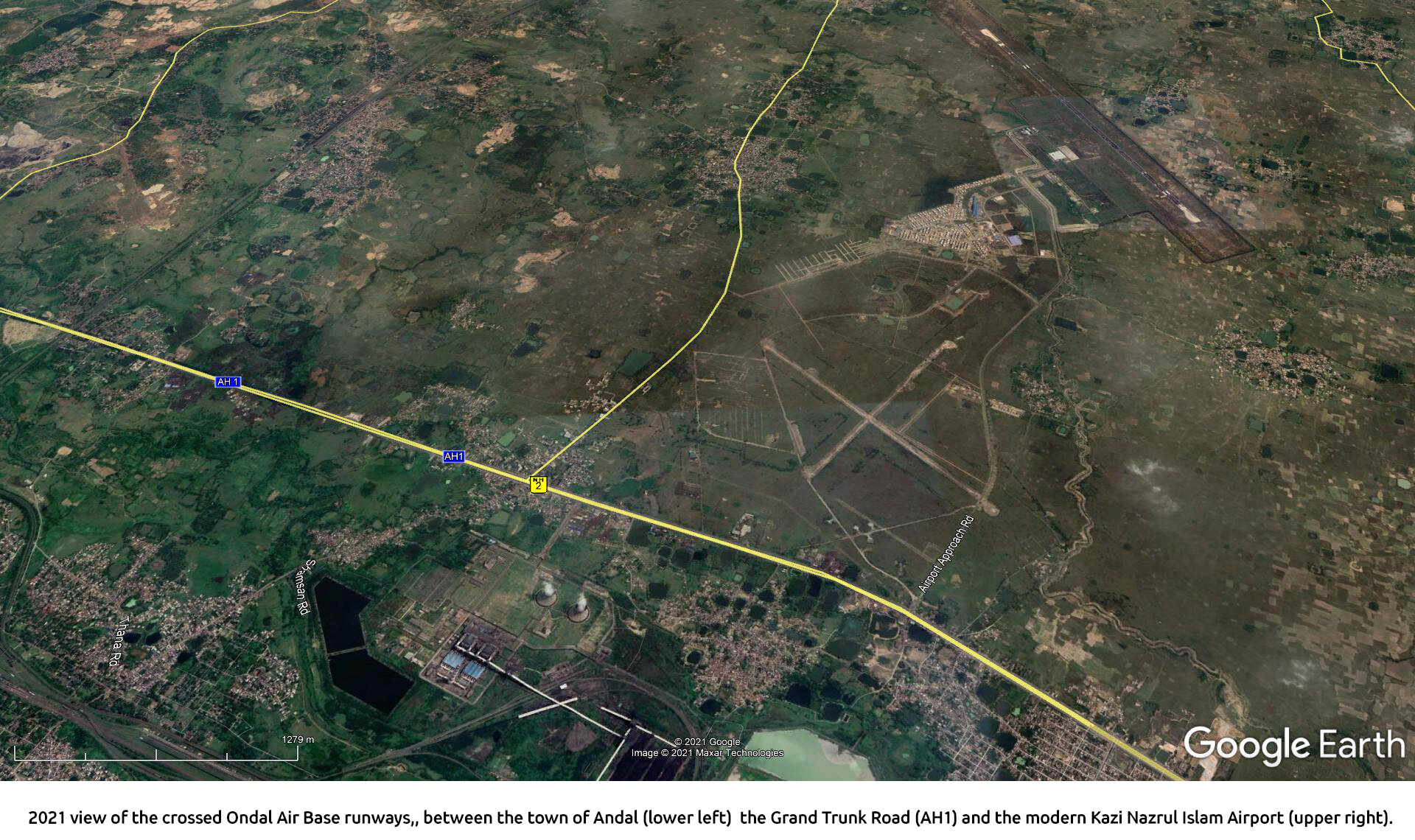Do US Chemical Weapons from WWII Remain Buried in India?

Ondal Air Base in India was one of many in WWII, used in the fight against Japanese forces in Burma and to support flights “Over the Hump” of the Himalayan Mountains. It was also the site of Ondal Advanced Chemical Park, a major supply depot for US chemical weapons. Toxic chemical weapons were never used, but they were ready.
Scroll down for project ideas and links to resources
A few questions to consider:
Most WWII air bases in India have either been repurposed or are obscured by decay or vegetation. Ondal’s crossed runways, however, show surprisingly little change since the war ended in 1945. Why?
An unnamed Army photographer visited Ondal while the runways were under construction, and his photos are in the US National Archives. Who built these long-lasting runways and how?
Runways at Ondal were built for medium-range B-25 Mitchell bombers, but in early 1944 long-range B-29s arrived at nearby bases to participate in Operation Matterhorn. What changes would have been needed for B-29s to operate from Ondal?
In Operation Matterhorn, B-29s based in India conducted the first attacks on the Japanese home islands since the Doolittle Raid, although direct flights from India to Japan were impossible. How were the Matterhorn raids conducted. Was it logistically possible for the raids to have included chemical bombs as well as the explosive and incendiary bombs which were actually used?
India, Burma and Malaya were British colonies. Sumatra was an oil-rich part of the Dutch East Indies. All became independent soon after WWII. How were the independence movements related to the conduct of WWII in this region?
Why were the chemical bombs at Ondal never used? What happened to the bombs after the war?
CBI Theater
This Wikipedia article provides a good introduction to military aspects of the region during this period, focusing exclusively on the conflict with Japan. It does not deal with the colonial conflicts.
Photographer’s Visit
A collection of 18 photos taken in 1943 showing diverse views of Ondal Air Base while it was still under construction. Included are flight and ground crews, Red Cross volunteers, and local workers. Captions are those provided by the unnamed photographer.
Bengal famine of 1943
This Wikipedia article provides an Indian perspective on the plight of people living in Bengal, India where Ondal Air Base was located. Conditions in the immediate area of Ondal were likely less severe than in other locations, in part because the base provided employment.
Click on images below to investigate more deeply.
Training Video for Chemical Soldiers
The Why and Why Not of Chemical Weapons
Original Source: Unit History Reports from the Company Operating Ondal Advanced Chemical Park
Segregated Service In WWII
Chemical Weapons in the Pacific Theater
Interactive Map of Ocean-Dumped Chemical Weapons
Photos from Ondal ACP, by Hoosier Scientist's Father
The Story of Sgt. Solomen Rangel
Public Opinion Polls on the Use of Toxic Chemicals
Details about the fire-bombing of Japan in early 1945
Is this the monument described in the reports of the 771st Chemical Depot Company?













